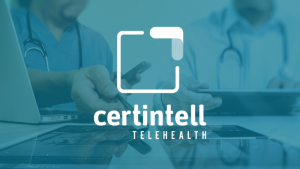The numbers are clear: hypertension takes a disproportionate hold of minority patients, particularly among African-Americans. Forty-one percent of Black Americans have high blood pressure compared to 27 percent of whites¹, and black Americans develop end stage renal disease at a rate three times higher than white Americans.² However, little is being done to change this concerning statistic. Earlier this year, HRSA announced an initiative to decrease hypertension rates through remote patient monitoring (RPM) and other technological efforts. While it is true that technology can greatly aid care teams in combating these disparities, a deeper understanding is needed at the base. If care teams aren’t sure of why they’re doing what they’re doing, the motivation and drive needed to tackle health disparities can begin to dissipate.
Self-Education
Research suggests that in order to optimize hypertension care for minority populations, more research on how the disease affects these populations is needed.
“Lack of data specific to African Americans has the potential to create a new disparity in the era of precision medicine, says one study from The National Heart, Lung and Blood Institute (NHLBI)². “Partnerships with Federally Qualified Health Centers and other community-based organizations that predominantly serve African Americans and use of data sets from RCTs [randomized controlled trials] with a substantial number of African Americans could remedy this underrepresentation in genomic research.”
Where there is no data available, health organizations can narrow this information gap by analyzing their own patient populations. Trends in patient data can be used to predict where problems may arise. Although, this analysis should be holistic in nature. This could mean interviewing patients about lifestyle habits, social barriers (see social determinants of health, SDOH) to care and their level of personal and emotional motivation to see through a care plan.
These little steps can help offset big consequences. Often, physician training doesn’t reflect this holistic mindset, but it’s never too late to change care delivery for your patients–especially when the industry increasingly shifts toward value-based care.
“Most training programs are focused on academic scholarship and devote insufficient attention to skills needed to address racial disparities by measurement of social determinants associated with hypertension; application of health services research methods to explore burden and mechanisms of racial disparities; or selection of clinical outcomes in event-based RCTs and BP [blood pressure] outcomes in quality improvement trials that are especially relevant in African Americans,” say the same researchers from the NHLBI. “This highlights the need for interdisciplinary training programs that incorporate social and behavioral sciences, environmental factors, and expertise in health policy.”²
But of course, implementing sufficient training programs among busy clinicians could be difficult. This is why some researchers advise the implementation of health coaches into workflows to simplify care for clinicians and transform care for patients.
Health Coaches: A Partner for Clinicians and Patients
It’s also no secret that care is needed beyond the four walls of a doctor’s office. Care is best delivered on a continuum, when it is able to integrate with all or multiple aspects of a patient’s life.
“Nonpharmacological interventions, including reduced sodium and increased potassium intake, weight loss, increased physical activity, and healthy diets such as the Dietary Approaches to Stop Hypertension (DASH) lower BP in adult African Americans,” says the NHLBI.
This extra work isn’t always easily able to be integrated into physician workflows. Conversely, health coaches are trained to help do this work in collaboration with clinical teams, without taking away from your practice.
Health coaches can help patients understand their data and create actionable steps, such as meal or exercise plans, around that data. This simple addition can be crucial to the outcomes of hypertensive patients.
“One-half of patients in the United States with hypertension have poorly controlled blood pressures,” begins to cite one study evaluating the positive correlation between health coaching and improved blood pressure. “To understand why, consider usual care for hypertension. Patients are followed in 15-minute visits that include other medical issues, and they often leave the visit without knowing their blood pressure level or goal. Physicians may not address elevated blood pressures because of competing demands, a phenomenon called clinical inertia.”³
The study says failures in hypertension management can be attributed to four factors³:
- Poor patient understanding of physician instructions,
- Lack of patient participation in decision making
- Low medication adherence
- Clinical inertia. Fifty percent of patients leave the physician visit not understanding physician instructions.
It then goes on to say that the implementation of health coaches addresses the last two barriers. When health coaches are able to encourage patients to be informed and active participants in their care, medication and treatment plan adherence should naturally increase. In regard to clinical interia, the study says health coaches can help titrate antihypertensive medications at home and answer the questions the patient might not have time to ask in the office.³
These tactics improve care and save physician time.
Emerging Partnerships with CBOs
While some evidence suggests black patients may be more susceptible to hypertension due to biological factors, a large majority of the issue could be attributed to social determinants of health, which can include socioeconomic factors, social support, dietary environment and stress.
Because of this, health organizations should consider partnering with community-based organizations (CBOs). These organizations fundamentally understand the barriers impeding health, whether it be lack of transportation or food deserts. Their job is to circumvent these societal barriers and offer aid to those who need it so communities can flourish. What’s so critical to understand is that these organizations touch and attempt to improve aspects of a patient’s life of which are often out of a physician’s reach.
In the end, transforming care should not be done by increasing physician workload, but rather by finding fitting partnerships and solutions that carry the expertise to make your approach to care well-rounded, efficient and complete.
How We Can Help
Certintell’s mission is to focus on those underserved, so we want to help your patients achieve better health for the same reasons as you. Our fully-trained and certified health coaches help with patient education and adherence as mentioned above. We work alongside you to develop and execute care plans based on the patient’s lifestyle for a tailored approach to care. Our remote patient monitoring devices and portal can be used in tandem to allow for data analysis and well-informed care. To start changing the disparities that may be facing your own community, contact us today for a simple conversation on how you could start.
SOURCES:
¹ Beckerman, James. “High Blood Pressure in African-Americans.” WebMD, 1 Mar. 2007, www.webmd.com/hypertension-high-blood-pressure/guide/hypertension-in-african-americans#1.
² Whelton, Paul K., et al. “Research Needs to Improve Hypertension Treatment and Control in African Americans.” The National Center for Biotechnology Information, 12 Sept. 2016, www.ncbi.nlm.nih.gov/pmc/articles/PMC5063700.
³ Margolius, David, et al. “Health Coaching to Improve Hypertension Treatment in a Low-Income, Minority Population.” The National Center for Biotechnology Information, 10 May 2012, www.ncbi.nlm.nih.gov/pmc/articles/PMC3354968.



